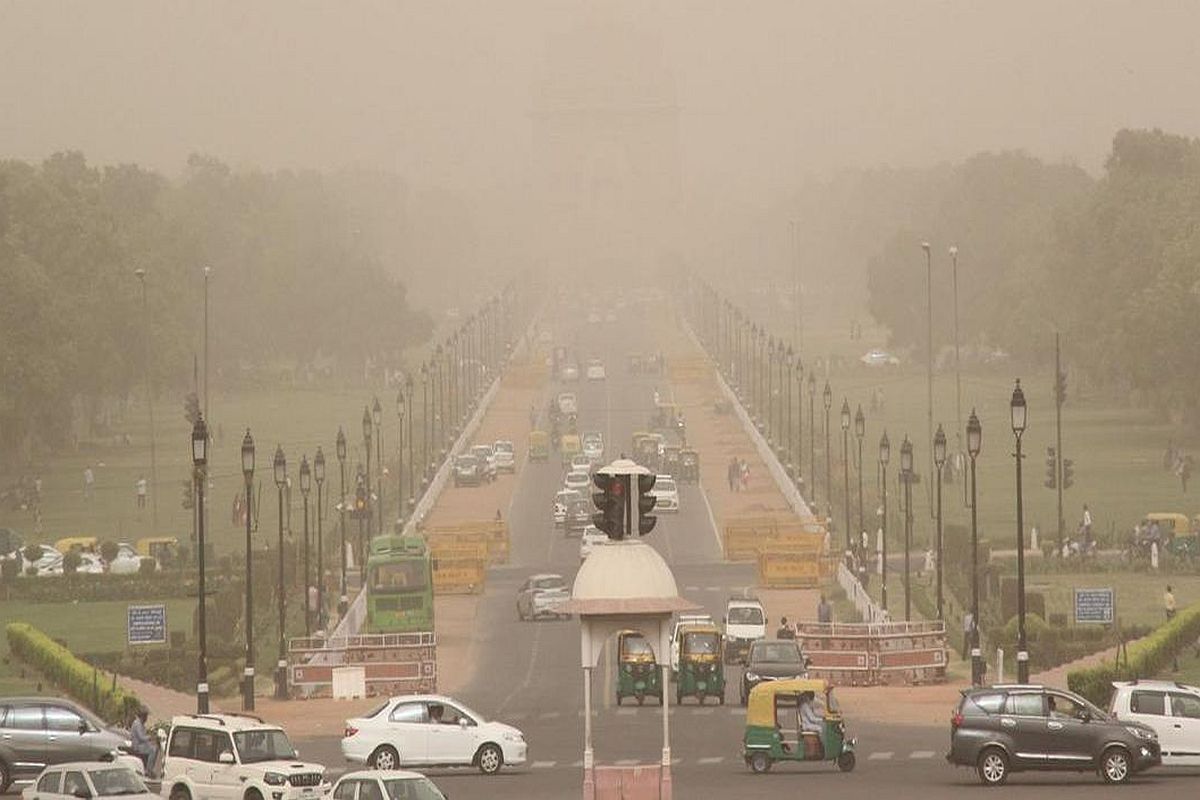Delhi PWD Minister inspects development projects
During the inspection, Minister Pravesh Verma took stock of three important projects. The first is from Bhoro Marg to Sarai Kale Khan where road strengthening work is going on till the ring road.
The Ministry of Earth Sciences’ air quality monitoring service, SAFAR, had earlier predicted that the city’s overall air quality index (AQI) would enter the ‘severe’ category between 1 am and 6 am on Monday.

Delhi air pollution (File Photo: IANS)
The morning after Diwali saw the season’s worst pollution levels with a thick cloud of smog as the air quality dipped to ‘very poor’ category in Delhi.
However, the air quality turned out better than the last three years, according to data of the government’s air quality monitors.
Advertisement
The Ministry of Earth Sciences’ air quality monitoring service, SAFAR, had earlier predicted that the city’s overall air quality index (AQI) would enter the “severe” category between 1 am and 6 am on Monday, primarily due to firecracker emissions, unfavourable weather and a significant spike in stubble burning.
Advertisement
But, Delhi sprung a surprise with air quality sensors recording only a marginal increase in pollution levels even though people continued bursting crackers until late on Sunday night, violating the Supreme Court-enforced two-hour limit with impunity.
While the city’s AQI stood at 327 at 11 pm. It dipped to 323 at 3.30 am, just about when it was expected to enter the “severe” category.
It, however, increased to 340 at 8:30 am, as the weather department reported occurrence of shallow fog. An AQI between 0-50 is considered “good”, 51-100 “satisfactory”, 101-200 “moderate”, 201-300 “poor”, 301-400 “very poor”, and 401-500 “severe”. Above 500 is “severe-plus emergency” category.
Thirty-six of the 37 air quality monitoring stations in the capital recorded their AQI in “very poor” category. Delhi’s air quality was, however, better than satellite towns of Ghaziabad (375), Greater Noida (356), Gurgaon (352) and Noida (375), according to Central Pollution Control Board’s data.
The pollution had entered the “hazardous” zone during Diwali in the national capital on Sunday.
A meeting was held last week of the task force on the Graded Response Action Plan (GRAP) for air pollution in Delhi-NCR. The meeting held at the Central Pollution Control Board (CPCB) was specifically called to review the likely air quality situation during the next few days.
Prashant Gargava, Member Secretary, CPCB had emphasised that the next few days will be challenging and in addition to the intense actions by implementing agencies, additional preventive measures may be required to check the deteriorating air quality.
Among the recommendations made was that the Supreme Court directions regarding firecrackers should be strictly enforced. Hot mix plants, stone crushers and construction activities such as earthwork, which have potential to generate dust should be banned between October 26-30 in Delhi and satellite towns such as Gurugram, Faridabad, Noida, Greater Noida, Ghaziabad, Sonepat and Bahadurgarh.
Also recommended was the closure of coal-based industries with exemption to power-plants during this period.
Mid-October to November is considered critical days for Delhi’s air quality due to stubble burning in neighbouring states and emissions from firecrackers in Diwali.
Advertisement